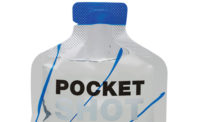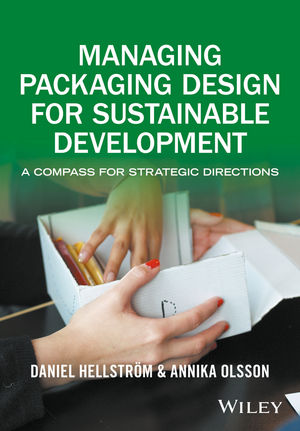Technology: Sealing
Ultrasonics Expand Packaging Potential for Sustainable, Bio-Based Plastic Materials
Bill Reed is the business development manager, Packaging, for Branson at Emerson.

Even as the COVID-19 pandemic has caused a short-term upswing in demand for single-use plastic packaging, the longer-term trend is toward sustainability. And so, with an eye toward the future, more and more manufacturers are striving to increase the use of bio-based plastic materials as a sustainable solution for many product packaging applications.
Consumer-conscious manufacturers know that the use of biodegradable or industrially compostable bio-based plastics is one way to reduce the solid-waste burden of packaging for everything from straws and drink containers, to single-use snack food and beverage packages, to the bubble wraps and films that protect e-commerce items being shipped to homes. More than 250 of these manufacturers, representing 20% of all plastic packaging produced worldwide, have made a global commitment to eliminate plastic waste and pollution at its source, pledging that 100% of their plastic packaging must be reusable, recyclable or compostable by 2025. Signatories to this pledge include a who’s who of major global corporations: Mars, Nestle, Walmart, SJ Johnson, Unilever, Colgate-Palmolive, Apple, Coca-Cola, Johnson & Johnson, PepsiCo and many more.
Central to the success of plastic packaging sustainability efforts is the continued development of biodegradable or compostable bio-based materials like polylactic acid (PLA), polybutyrate (PBAT) and polyhydroxyalkanoate (PHA) as replacements for conventional plastic materials such as polypropylene (PP) or polyethylene. And, whether these materials are utilized in the form of pouches, bags or other containers, these next-generation sustainable packages will have to perform to high standards, combining all of the integrity, safety, attractiveness and convenience of current conventional packages.
But adapting current packaging designs and traditional package-sealing equipment to bond newer bio-based plastic materials with commercial-grade quality and reliability poses challenges. First, bio-based plastics are more difficult to seal because they contain a lower amount of thermoplastic polymer. Instead of conventional polymer, they generally incorporate 20% or more biologically based materials — starch, soymeal, sugarcane bagasse, coconut shell extract or other plant-based material — to aid in biodegradability or compostability.
Second, the heat-sealing equipment used to fabricate many current-generation packages does not lend itself to the sensitive process control. Typical heat-sealing equipment provides only simple controls such as time, temperature and pressure, so it can be difficult to manage changes in material type or thickness. For this reason, more machine builders are offering, and more manufacturers and packagers are considering, a different option for fabricating and sealing packages: ultrasonic welding technology.
Because they are equipped with multiple bonding/sealing modes, fully programmable controls and data-gathering capabilities, ultrasonic welders offer package makers the promise of more precise and repeatable bonding and sealing within the narrower processing “windows” of bio-based resins. They replace the simple thermal sealing tools and controls of the past with the capability to:
- Bond bio-based materials using weld-by-energy, peak power or weld-by-time modes that offer control over all parameters of the bonding process.
- Fine-tune the amplitude — the frictional heating potential generated by ultrasonic tooling — using sensitive, digital controls.
- Collect performance data for every weld that is made, comparing actual welder performance with specified parameters.
As weld data is collected, package developers can set high/low limits on selected parameters or trigger alarms that flag individual weld cycles or packages that fall outside of process limits. Because these signals are latchable, they can be used to automatically data-log and eliminate bad packages from processing. These ultrasonic welding capabilities can not only help packagers accelerate the development and implementation of new packages built with bio-based plastic materials but also provide them with the means to assure and manage package quality and integrity as new designs are tested and rolled out to market.
Beyond its applicability to building and sealing packages made with bio-based plastic materials, ultrasonic welding technology contributes to plastic package sustainability in other ways:
Reduced package and product waste. There are a range of products — various foods and beverages, powders, leafy produce, oils, cereals or feeds — that, when packaged, can leave residue on the sealing surfaces. When conventional heat seals are used, this residue can become encapsulated within the seal, resulting in product contamination or package leaks and failures. Ultrasonic welding eliminates this potential problem because before the high-frequency vibratory motion of ultrasonic welding heats the sealing surfaces, it first vibrates and displaces potential contaminants — solids, fluids or moisture — out of the seal interface. The result is less package and product waste due to contamination, failure or rejects.
Reduced package material consumption. Because of its precision, ultrasonic welding can provide strong seams and welds using significantly less width of material than typical heated-tool seals. Narrower sealing bands reduce the amount of plastic material needed, whether conventional or bio-based, to complete each package.
Reduced process energy consumption. Because conduction heat-sealing systems must be continually powered and maintained at a specific operating temperature, they consume relatively high amounts of energy compared to ultrasonic welding systems of identical production capacity. Ultrasonic welders consume electricity only in short bursts, typically under one second, when they are in operation. This results in substantial process energy savings, conservatively estimated at 25% to 75%.
Worldwide, manufacturers and packagers are responding to the challenges of sustainability by adopting bio-based plastic materials and ultrasonic welding technology to implement a growing range of innovative products made with bio-based plastic materials. These include compostable coffee pods, stand-up pouches and bags, sustainable VFFS (vertical form-fill-seal) snack food packages, and e-commerce packages that utilize high percentages of recyclable or compostable content.
Looking for a reprint of this article?
From high-res PDFs to custom plaques, order your copy today!








